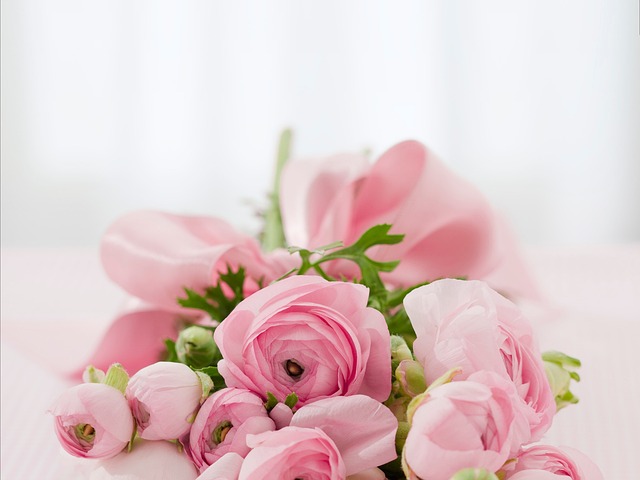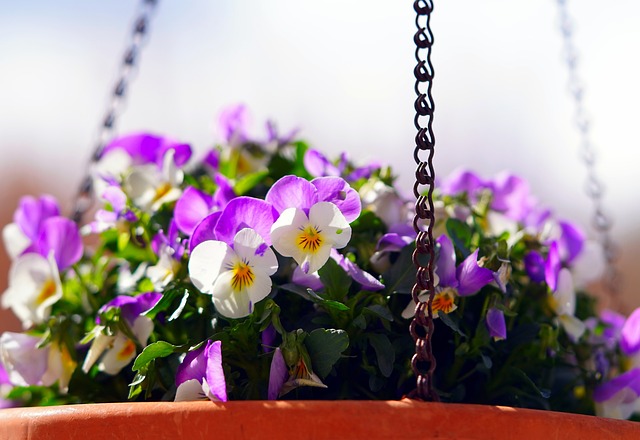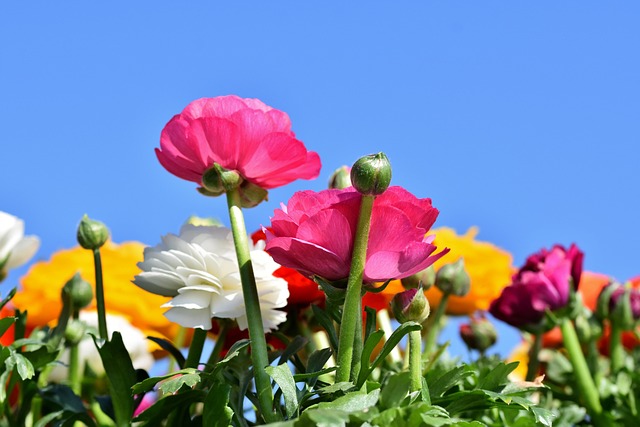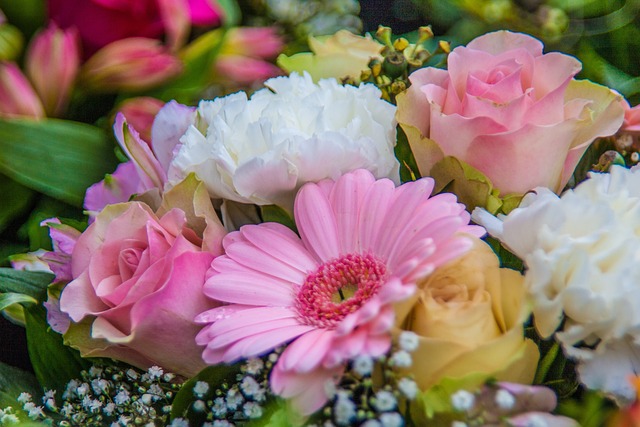Japan is home to many profound expressions that capture the essence of life’s most important values. Among these gems of wisdom is the beautiful phrase “Hana mo Mi mo Aru” (花も実もある), which literally means “having both flowers and fruit.” This expression embodies the ideal state where external beauty and inner substance exist in perfect harmony. Unlike many cultures that often prioritize one over the other, this Japanese concept celebrates the rare and precious balance of both qualities together.
In this article, we’ll explore the deep meaning behind this expression, its cultural significance, and how you can apply this time-honored wisdom to enrich your own life. Drawing from my 30+ years of experience as a florist in Japan, I’ll also share how this philosophy manifests in the art of flower arrangement and beyond.
- The Meaning of “Hana mo Mi mo Aru”
- The Origin and Cultural Context
- How to Use This Expression
- The “Hana mo Mi mo Aru” Warrior: Honda Tadakatsu
- The Opposite: “Hana mo Mi mo Nai”
- English Equivalents and Cultural Differences
- Applying “Hana mo Mi mo Aru” to Flower Arrangements
- 5 Tips for Cultivating a “Hana mo Mi mo Aru” Life
- Summary
The Meaning of “Hana mo Mi mo Aru”

The expression “Hana mo Mi mo Aru” describes something or someone that possesses both external beauty and inner value simultaneously. In its most literal sense, it refers to the rare phenomenon in nature where a plant displays both beautiful flowers and ripe fruit at the same time.
In Japanese culture, this phrase is used to describe:
- A person who is both attractive in appearance and rich in character
- A creation that is both aesthetically pleasing and functionally excellent
- An idea that is both intellectually stimulating and practically useful
- An experience that is both immediately enjoyable and deeply meaningful
This concept resonates deeply in Japanese aesthetics, where the balance of form and function is highly valued. Unlike the Western phrase “don’t judge a book by its cover,” which often dismisses external beauty as superficial, the Japanese perspective acknowledges that both the exterior and interior qualities can coexist and enhance each other.
The Origin and Cultural Context
The origin of “Hana mo Mi mo Aru” lies in keen observation of the natural world. In most plants, flowers and fruits appear at different times in the growth cycle – flowers bloom, then wither and give way to fruit. Only rarely do both exist simultaneously on the same plant.
This expression emerged from Japan’s deep-rooted connection to nature and the changing seasons. Japanese culture has always placed great importance on observing natural phenomena and deriving philosophical insights from them. The country’s four distinct seasons provide a constant reminder of life’s transient nature, a concept known as “mono no aware” (物の哀れ) – the pathos of things.
Some citrus trees, like lemon and orange, occasionally display what’s called “ryōsei kajitsu” (両性花実) – a phenomenon where flowers and fruits coexist. This rare and beautiful sight inspired the metaphorical expression that we’re exploring.
Japanese Aesthetic Values
To fully appreciate “Hana mo Mi mo Aru,” it helps to understand some fundamental Japanese aesthetic principles:
| Principle | Meaning | Relationship to “Hana mo Mi mo Aru” |
|---|---|---|
| Wabi-Sabi | Finding beauty in imperfection and transience | Appreciates both the fleeting beauty of flowers and the lasting value of fruit |
| Ma | The meaningful space between elements | The balance between external presentation and internal substance |
| Miyabi | Refined elegance and courtliness | The graceful integration of form and function |
| Shibui | Subtle, unobtrusive beauty | Valuing substance without sacrificing aesthetic appeal |
In a culture that values these principles, “Hana mo Mi mo Aru” represents an ideal state where multiple aesthetic and practical values coexist in harmony.
How to Use This Expression

For those learning Japanese or interested in Japanese culture, understanding how to use “Hana mo Mi mo Aru” in context can be valuable. Here are some practical examples:
In Daily Conversation
- About a film or book: “This movie isn’t just visually stunning – it has a profound story too. It truly is ‘Hana mo Mi mo Aru.’“
- Describing a person: “She’s not only beautiful but also incredibly kind and intelligent – a perfect example of ‘Hana mo Mi mo Aru.’“
- Regarding a gift: “Thank you for this present! It’s both gorgeous and practical – ‘Hana mo Mi mo Aru’ indeed!”
- About an event: “The seminar was entertaining and educational – truly ‘Hana mo Mi mo Aru.’“
In Business Settings
- About a project proposal: “This plan has both visual appeal and strong profitability projections – it’s ‘Hana mo Mi mo Aru.’“
- Regarding product development: “Let’s develop a product that combines excellent design with superior functionality – a truly ‘Hana mo Mi mo Aru’ creation.”
- In personnel evaluation: “She delivers impressive results while also supporting her teammates – she’s a ‘Hana mo Mi mo Aru’ employee.”
In everyday usage, this expression often serves as a higher form of praise than simple words like “good” or “excellent.” It conveys a deeper appreciation for something that achieves the difficult balance of excellence in multiple dimensions.
The “Hana mo Mi mo Aru” Warrior: Honda Tadakatsu
One fascinating historical figure often described as embodying “Hana mo Mi mo Aru” is Honda Tadakatsu (本多忠勝, 1548-1610), one of the “Four Heavenly Kings” who served the shogun Tokugawa Ieyasu during Japan’s warring states period.
Honda Tadakatsu earned this description because he perfectly balanced:
The “Flower” aspects:
- His imposing physical presence and dignified appearance
- His elaborate helmet decorated with expensive Tibetan yak hair
- His distinctive fighting style using unique weapons
The “Fruit” aspects:
- His remarkable longevity (living to age 62 in an era where many warriors died young)
- His legendary record of never being wounded in battle
- His unwavering loyalty to the Tokugawa clan
- His strategic wisdom and cool judgment
A famous saying about Honda Tadakatsu illustrates his exceptional value: “Lord Ieyasu possesses two things in excess – the Tibetan fur on his helmet and Honda Heihachirō (Tadakatsu’s common name).”
This meant that both the luxurious helmet decoration and Tadakatsu himself were “too good” for someone of Ieyasu’s rank – a testament to Tadakatsu’s extraordinary worth as a retainer.
For visitors to Japan interested in samurai history, Honda Tadakatsu represents a perfect example of how the “Hana mo Mi mo Aru” ideal was valued even in the martial context, where both impressive appearance and genuine ability were considered essential for greatness.
The Opposite: “Hana mo Mi mo Nai”

The Japanese expression “Hana mo Mi mo Nai” (花も実もない) is the direct opposite of our featured phrase. It describes something that lacks both external appeal and internal value – something that fails on all counts.
Examples of how this phrase might be used:
- “I had high expectations for that restaurant, but it turned out to be ‘Hana mo Mi mo Nai’ – unattractive food with poor taste.”
- “After hours of discussion, the meeting ended with ‘Hana mo Mi mo Nai’ results – no concrete plans or even creative ideas.”
This opposing expression helps highlight the value placed on achieving excellence in both form and substance in Japanese culture.
English Equivalents and Cultural Differences
When translating cultural concepts, finding perfect equivalents can be challenging. Here are some English expressions that capture aspects of “Hana mo Mi mo Aru,” though none perfectly conveys its full meaning:
| English Expression | Meaning | How It Compares |
|---|---|---|
| “The best of both worlds” | Having advantages of two different things | Similar but broader in application |
| “Form and substance” | Having both style and meaningful content | Very close in meaning but lacks the nature metaphor |
| “Style and substance” | Combining attractive presentation with solid content | Nearly equivalent but lacks the cultural context |
| “Beauty and utility” | Being both beautiful and useful | Similar but more focused on function than inner value |
The Japanese concept carries unique cultural nuances related to the nation’s connection to nature and aesthetic traditions that don’t translate perfectly. When explaining “Hana mo Mi mo Aru” to non-Japanese speakers, I always include the plant metaphor to help convey its rich meaning.
Applying “Hana mo Mi mo Aru” to Flower Arrangements

As a florist with over 30 years of experience, I’ve found that “Hana mo Mi mo Aru” applies beautifully to the art of flower arrangement. A truly exceptional arrangement should have:
- Visual beauty (the “flower” aspect): striking colors, balanced composition, and harmonious design
- Lasting value (the “fruit” aspect): good longevity, pleasing fragrance, and perhaps seasonal significance
In traditional Japanese ikebana (flower arrangement), this balance is particularly important. Unlike some Western styles that focus primarily on visual impact, ikebana seeks to create arrangements that are both immediately beautiful and thoughtfully composed to express deeper meanings.
International Floral Traditions Compared
Different cultures approach the balance of beauty and substance in floral art in fascinating ways:
| Cultural Style | Focus | Approach to “Hana mo Mi mo Aru” |
|---|---|---|
| Ikebana (Japan) | Minimalism, space, meaning | Emphasizes both visual refinement and philosophical depth |
| European-American | Abundance, color harmony | Often prioritizes visual impact, with substance in technical perfection |
| Thai | Intricate carving, religious significance | Balances detailed craftwork with spiritual meaning |
| Chinese | Symbolism, traditional meanings | Emphasizes cultural significance alongside visual beauty |
Learning about these different approaches can help international flower enthusiasts appreciate the unique Japanese perspective that “Hana mo Mi mo Aru” represents.
5 Tips for Cultivating a “Hana mo Mi mo Aru” Life
The wisdom of this Japanese expression extends far beyond language or flowers – it offers a philosophical approach to living a fulfilling life. Here are five insights I’ve gained from my years working with flowers that can help anyone cultivate both the “flowers” and “fruits” in their own lives:
1. Nurture Your Unique “Flowers”
Just as each flower has its distinctive beauty, every person has unique qualities that make them special. Rather than trying to be someone else, focus on developing your authentic self.
How to cultivate your unique “flowers”:
- Identify and develop your natural strengths and talents
- Embrace what makes you different instead of comparing yourself to others
- Find environments where your unique qualities can shine
In flower arranging, we never try to make a rose look like a lily – we enhance what makes each bloom special. Similarly, your distinctive qualities deserve to be celebrated and developed.
2. Develop Your Inner “Fruits”
While external qualities might catch attention initially, it’s your inner substance that creates lasting value. Invest in developing knowledge, skills, and character that will serve you throughout life.
How to develop your inner “fruits”:
- Commit to continuous learning and growth
- Seek diverse experiences that challenge you
- View difficulties as opportunities for development
- Nurture meaningful relationships that help you grow
Just as plants transform nutrients into fruits, we can transform our experiences – even difficult ones – into wisdom and strength.
3. Balance “Flowers” and “Fruits”
Achieving “Hana mo Mi mo Aru” requires mindful attention to both external presentation and internal development, without neglecting either.
How to maintain balance:
- Allocate time for both self-presentation and inner growth
- Be authentically yourself while also presenting your best self
- Recognize when you’re overemphasizing one aspect at the expense of the other
In flower arranging, the most captivating designs balance visual appeal with thoughtful composition and meaning. Your life can embody this same beautiful equilibrium.
4. Honor Seasons and Timing
Plants have natural flowering and fruiting seasons, and humans similarly experience different phases of life. Recognizing and working with your current “season” leads to greater harmony and fulfillment.
How to work with your seasons:
- Set goals appropriate to your current life stage
- Recognize opportunities when they arise
- Respect your natural rhythms rather than forcing unnatural schedules
- Allow for periods of rest and regeneration
In Japanese floral art, seasonal awareness is paramount. Working with rather than against the natural timing of life brings both beauty and abundance.
5. Create a Nurturing Environment
Just as plants need the right conditions to flourish, humans thrive in environments that support their growth and expression.
How to create your ideal environment:
- Surround yourself with positive, supportive people
- Seek places where you can both contribute and grow
- Establish healthy routines that support your wellbeing
- Allow for periods of reflection and self-assessment
In my florist work, I’ve observed that the right conditions – clean water, appropriate temperature, and proper care – are just as important as the flowers themselves. Similarly, the environment you create for yourself significantly influences your ability to achieve “Hana mo Mi mo Aru” in your life.
Summary
The Japanese concept of “Hana mo Mi mo Aru” offers profound wisdom that transcends cultural boundaries. This beautiful expression reminds us that:
- True excellence combines both external beauty and inner substance
- This ideal state is rare and worthy of special appreciation
- The metaphor comes from the natural world, where flowers and fruits rarely appear simultaneously
- This concept has been valued throughout Japanese history, even in martial contexts
- Similar but not identical concepts exist in other cultures
- The philosophy can be applied to flower arrangement and to our own lives
By striving for this harmonious balance in our own lives – cultivating both our “flowers” and our “fruits” – we can experience greater fulfillment and make more meaningful contributions to the world.
Whether you’re a flower enthusiast, a student of Japanese culture, or simply someone seeking wisdom for a more balanced life, the concept of “Hana mo Mi mo Aru” offers timeless guidance for achieving beauty and substance in perfect harmony.


